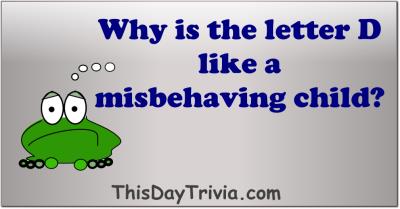




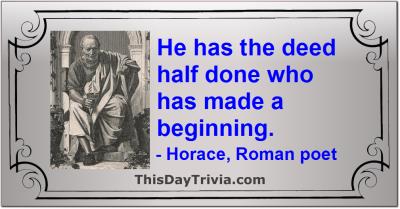




What Happened On



Beirut Embassy Bombing
April 18, 1983
A suicide truck-bomber strikes the U.S. Embassy in Beirut, killing 17 Americans and 46 Lebanese. This attack marked the beginning of Islamist attacks on U.S. targets and remains the most lethal attack in the CIA's history. The pro-Iranian group Islamic Jihad Organization claimed responsibility for the bombing. However, the U.S. claimed the Iranian-backed Muslim militia group Hezbollah were responsible for the attack.
It happened during the Lebanese Civil War after the U.S. and other Western countries intervened.
The U.S. would relocate its embassy to Aukar, a Christian suburb of East Beirut, where it was again bombed the following year.


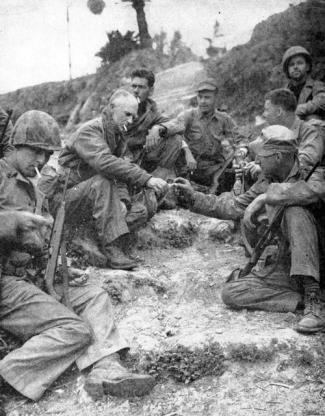 Pyle (center left) sharing a cigarette with a soldier on Okinawa shortly before his death
Pyle (center left) sharing a cigarette with a soldier on Okinawa shortly before his death
 Pyle (center left) sharing a cigarette with a soldier on Okinawa shortly before his death
Pyle (center left) sharing a cigarette with a soldier on Okinawa shortly before his death
War Correspondent Ernie Pyle Killed
April 18, 1945
The American Pulitzer-winning journalist and war correspondent Ernie Pyle is killed by enemy fire during the World War II Battle of Okinawa. His column was published in nearly 200 newspapers and he received a Pulitzer Prize for his World War II coverage.



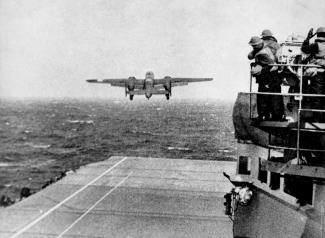 B-25 bomber takes off from the USS Hornet during the "Doolittle Raid"
B-25 bomber takes off from the USS Hornet during the "Doolittle Raid"
 B-25 bomber takes off from the USS Hornet during the "Doolittle Raid"
B-25 bomber takes off from the USS Hornet during the "Doolittle Raid"
World War II - First U.S. Bombing of the Japanese Mainland
April 18, 1942
Jimmy Doolittle raids Tokyo with 16 B-25 bombers. The bombers had taken off from the USS Hornet. Due to the bomber's high fuel consumption, instead of returning to the Hornet after the bombing run, the bombers were to fly to a recovery field in China, but one flew to Russia instead. Eventually after running low on fuel, Doolittle and most of the other crews bailed out over China and were led to safety by Chinese guerrillas and the American missionary John Birch. Seven crew members died, four as a result of being captured and murdered by the Japanese and three due to an aircraft crash or while parachuting. All 16 of the airplanes were lost.
Even though they had been instructed not to fly to Russia, one pilot did so because his plane was burning excessive fuel. He managed to land safely, but he and his crew were taken prisoner by the Russians. After being held for 13 months, he and his crew escaped to the British Embassy in Iran, from where they eventually made it back to the U.S.



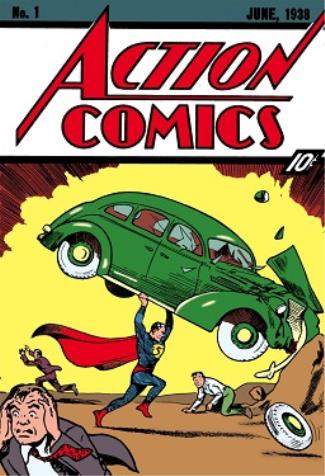


Superman
April 18, 1938
Action Comics #1 featuring Superman first hit the news stands. It is now the most expensive comic book of all time, with a copy selling for $3.2 million in 2014. Action Comics was initially an anthology magazine with Superman only one of the stories, but it eventually became dedicated to Superman.
This date also serves as Superman's "official" birthday. However, the comic books and other sources give conflicting dates. The 1952 TV show The Adventures of Superman gave the date of April 10, 1926, and some DC Comics memorabilia give it as February 29th.


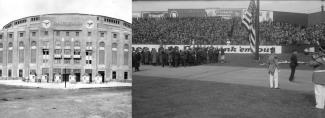 Yankee Stadium in the 1920s and Flag Raising on opening day
Yankee Stadium in the 1920s and Flag Raising on opening day
 Yankee Stadium in the 1920s and Flag Raising on opening day
Yankee Stadium in the 1920s and Flag Raising on opening day
Yankee Stadium
April 18, 1923
The stadium has its first game, with Babe Ruth hitting the stadium's first home run. The stadium became known as "The House That Ruth Built", since Ruth's prime years coincided with the stadium's opening and the beginning of the Yankees' winning history.
Other nicknames for the stadium included "The Cathedral of Baseball" and "The Bronx Zoo".


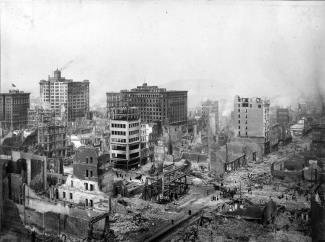


San Francisco Earthquake
April 18, 1906
One of the most violent U.S. earthquakes ever recorded hits San Francisco, destroying 25,000 buildings and killing thousands of people. Over 80% of San Francisco was destroyed by the earthquake and ensuing fires. The disaster also inflicted considerable damage to Santa Rosa, essentially destroying the entire downtown area.
Although the Richter magnitude scale was not in use in 1906, the most widely accepted estimate for the magnitude of the quake is 7.9. Estimates of the number of people killed range between 700 to 3,000 or more. The main shock was preceded by a strong foreshock by about 20 to 25 seconds. The main shock lasted about 42 seconds, followed by decades of minor earthquakes.
Between 227,000 and 300,000 people were left homeless out of a population of about 410,000.


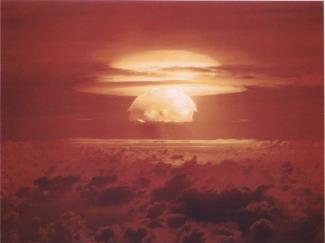


The End of the World
April 18, 1844
According to the religious followers of William Miller (Millerites), many of whom gave away their earthly possessions in preparation for the event. Their prediction was based on the 2300 day prophecy in Daniel 8:14 from the Bible: "Unto two thousand and three hundred days; then shall the sanctuary be cleansed." Miller assumed that the cleansing represented the Earth's purification by fire at Christ's Second Coming. Using the "day-year principle," Miller interpreted a day to mean a calendar year. Setting the starting date to the 457 B.C. decree to rebuild Jerusalem by Artaxerxes I of Persia, he concluded that end of the world would occur between March 21, 1843 and March 21, 1844. When that didn't happen, they assumed they had gotten their Biblical chronologies wrong and set the new date for April 18, 1844 using the Karaite Jewish calendar (as opposed to the Rabbinic calendar they had used previously). When that didn't happen, his followers adjusted the prediction to October 22. The failure of this prediction became known as "The Great Disappointment."
Some of the disappointed Millerites left the group and went on to form the Seventh-day Adventist Church.


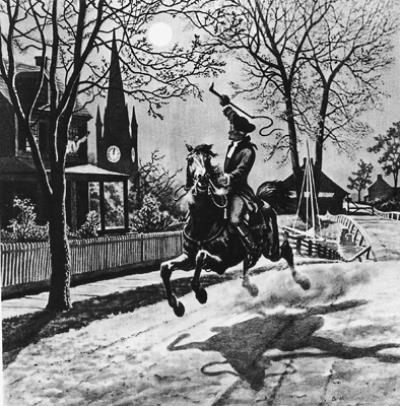


Paul Revere's Famous Ride
April 18, 1775
Paul Revere makes his famous ride announcing the arrival of the British during the American Revolution. Revere rode from Boston, Massachusetts to Lexington and warned Samuel Adams and John Hancock of the approaching British. He then set out to Concord in order to ensure military supplies that were stored there were safe. However, Revere was captured by the British just outside of Lexington. They confiscated his horse, but released him. Unable to complete the ride, he returned to Lexington on foot. His actions were dramatized in Henry Wadsworth Longfellow's poem, "Paul Revere's Ride" (1861).


Tiananmen Square
April 18, 1989
Several thousand students gather to mourn the death of pro-reform leader Hu Yaobang. Eventually more than a million would gather leading to martial law and the Tiananmen Square Massacre.


First Major-League Umpire to Wear Glasses
April 18, 1956
Eddie Rommel of the American League becomes the first major-league umpire to wear glasses in regular season game (New York Yankees and the Washington Senators).


First U.S. Launderette
April 18, 1934
First U.S. launderette opens, in Texas.


First Crossword Puzzle Book
April 18, 1924
The first crossword puzzle book is published by Simon and Schuster. The first crossword puzzle was published in 1913.


First U.S. Book Stamps
April 18, 1900
Issued by the U.S. Post Office. They contained 12, 24, or 48 2¢ stamps.
The first books stamps were issued by Luxembourg in 1895.


First Printing Telegraph
April 18, 1846
American inventor Royal Earl House receives a patent for his device, which was capable of 50 words a minute.


Birthdays




Hayley Mills (Hayley Catherine Rose Vivien Mills)
Born April 18, 1946
British actress. Film: Pollyanna (1960), The Parent Trap (1962), and That Darn Cat (1965).


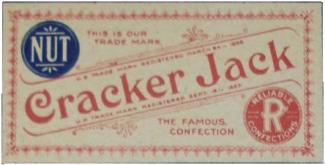



F.W. Rueckheim (Frederick William Rueckheim)
Born April 18, 1846 d. 1934
German-born American candy maker. He and his brother Louis Rueckheim created Cracker Jack candy (1893), to which he started adding prizes in 1921.



Conan O'Brien
Born April 18, 1963
American Emmy-winning TV host, comedian. He graduated magna cum laude from Harvard University. TV: Late Night with Conan O'Brien (1993-2009) and The Simpsons (writer and producer).



John James
Born April 18, 1956
American actor. TV: Dynasty (Jeff Colby).



Rick Moranis
Born April 18, 1953
Canadian Emmy-winning actor. Film: Ghostbusters (1984), Little Shop of Horrors (1986), and Honey, I Shrunk the Kids (1989). TV: Second City TV. Comedy Album: The Agoraphobic Cowboy (2005).



James Woods
Born April 18, 1947
American actor. Film: The Onion Field (1979), Videodrome (1983), and Once Upon a Time in America (1984).



Dorothy Lyman
Born April 18, 1947
American Emmy-winning actress. TV: Mama's Family (Naomi).



Robert Hooks
Born April 18, 1937
American actor. TV: N.Y.P.D. (Det. Jeff Ward).



Harold Innocent (Harold Sydney Harrison)
Born April 18, 1933 d. 1993
English actor. Film: Robin Hood: Prince of Thieves (1991, the corrupt bishop).


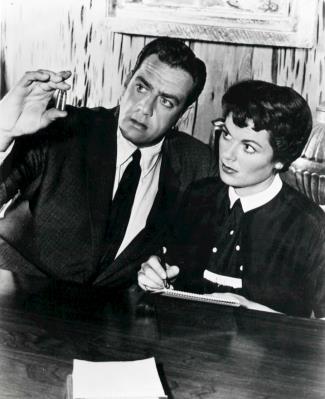



Barbara Hale
Born April 18, 1922 d. 2017
American Emmy-winning actress. Known for playing Perry Mason's secretary Della Street on TV's Perry Mason (1957-66). She also played in 30 made for TV Perry Mason films (1985-95). Her real-life son William Katt played detective Paul Drake, Jr. in nine of her Perry Mason TV movies and also played the lead in the TV series Greatest American Hero (1981-83).



Wendy Barrie (Wendy Jenkins)
Born April 18, 1912 d. 1978
British actress. TV: The Wendy Barrie Show.



Al Hodge
Born April 18, 1912 d. 1979
American actor. Radio: The Green Hornet (title role). TV: Captain Video and His Video Rangers (1950-55, second person to play the captain).



Dewey "Pigmeat" Markham
Born April 18, 1904 d. 1981
American comedian. TV: Rowan & Martin's Laugh-In (the judge).



Monkey Trial Lawyer
Clarence Darrow
Born April 18, 1857 d. 1938
American lawyer. Defender of John Scopes in the famous Tennessee Scopes Monkey Trial (1925).


Deaths




Dick Clark (Richard Augustus Wagstaff Clark Jr.)
Died April 18, 2012 b. 1929
American Emmy-winning, Rock and Roll Hall of Fame host. His show American Bandstand popularized the phrase, "It's got a good beat and you can dance to it." "For now, Dick Clark - so long!" TV: American Bandstand (1957-87) and host of the Times Square New Year's Eve celebrations (1972-2005).






Albert Einstein
Died April 18, 1955 b. 1879
German-born American Nobel-winning physicist and mathematician. He developed the theory of relativity and the mass equivalence formula: E=mc2. By the age of 26, he had published four ground-breaking papers: Photoelectric effect, Brownian motion, special relativity, and the equivalence of mass and energy. He would go on to publish more than 300 scientific papers. He was visiting the U.S. when Adolf Hitler came to power in 1933; being Jewish he did not want to return to Germany, eventually becoming a U.S. citizen.
Quote: Two things are infinite, the universe and human stupidity, and I am not sure about the universe.


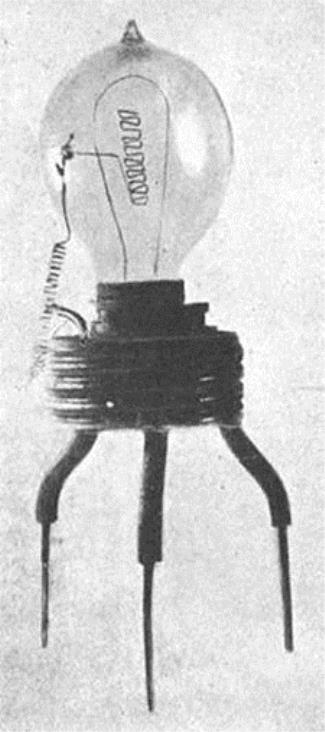



Inventor of the Vacuum Tube
Sir John Ambrose Fleming
Died April 18, 1945 b. 1849
English engineer. He patented the first vacuum tube (1904, also known as the thermionic valve), revolutionizing the wireless telegraph and ushering in the age of modern electronics. He also made numerous contributions to the development of the telephone and electric lighting.


 Pyle (center left) sharing a cigarette with a soldier on Okinawa shortly before his death
Pyle (center left) sharing a cigarette with a soldier on Okinawa shortly before his death
 Pyle (center left) sharing a cigarette with a soldier on Okinawa shortly before his death
Pyle (center left) sharing a cigarette with a soldier on Okinawa shortly before his death

Ernie Pyle (Ernest Taylor Pyle)
Died April 18, 1945 b. 1900
American Pulitzer-winning journalist, war correspondent. His column was published in nearly 200 newspapers. He received a Pulitzer Prize for his World War II coverage. Pyle was killed by enemy fire during the World War II Battle of Okinawa.


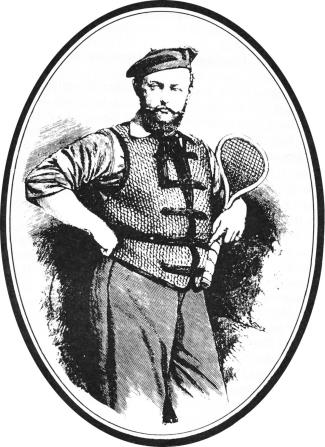 Major Walter Clopton Wingfield
Major Walter Clopton Wingfield
 Major Walter Clopton Wingfield
Major Walter Clopton Wingfield

Inventor of Lawn Tennis
Major Walter Clopton Wingfield
Died April 18, 1912 b. 1833
British tennis pioneer. Inventor of modern lawn tennis (1874).


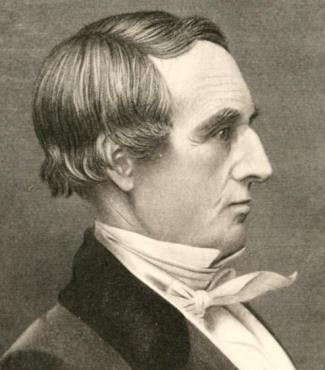



William Rufus King
Died April 18, 1853 b. 1786
American politician. 13th U.S. Vice-President (1853), U.S. Senator (1848-52, Alabama), U.S. Minister to France (1844-46), and U.S. Representative (1811-16, North Carolina). He is the only U.S. executive official to take the oath of office on foreign soil; taking the oath of office in Cuba. He died of tuberculosis 45 days after taking office.



Bernie Wayne
Died April 18, 1993 b. 1919
American composer. Bernie Wayne wrote over 1,000 songs and music for commercial jingles. Music: There She Is (1955, Miss America Pageant theme) and the music for Blue Velvet (1963, #1).


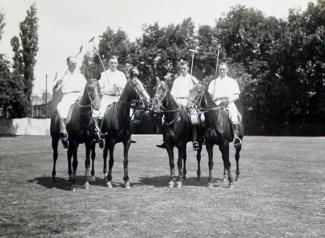 1921 American Polo Team - Hitchcock second from left
1921 American Polo Team - Hitchcock second from left
 1921 American Polo Team - Hitchcock second from left
1921 American Polo Team - Hitchcock second from left

Tommy Hitchcock, Jr.
Died April 18, 1944 b. 1900
American polo player, the greatest in the history of the sport. He received a 10-goal rating (the highest possible) for 18 of the 19 seasons he played (1922-40). He was instrumental in developing the P-51 Mustang for World War II, which he died in during a test flight crash.
F. Scott Fitzgerald's character Tom Buchanan in The Great Gatsby is based on Hitchcock.



Justus von Liebig
Died April 18, 1873 b. 1803
German organic chemist. His work in replacing soil minerals laid the foundation for modern fertilization.



John Graunt
Died April 18, 1674 b. 1620
English statistician. He co-wrote the world's first book of statistics and is the founder of the science of demography (the statistical study of human populations).


